Run your flow and set triggers to automate
This article covers what you need to know about running your Flow and setting up triggers to have it run automatically.
Updating & running your Flow
This article covers what you need to know about updating and running your Flow.
Updating your Flow
In Parabola, it's easy to update your Flow. When you’re done building a new Flow, you'll see a button to "Run Flow" in the top right corner of the Flow navigation bar. This will simultaneously publish the Flow, and run the Flow for the first time.
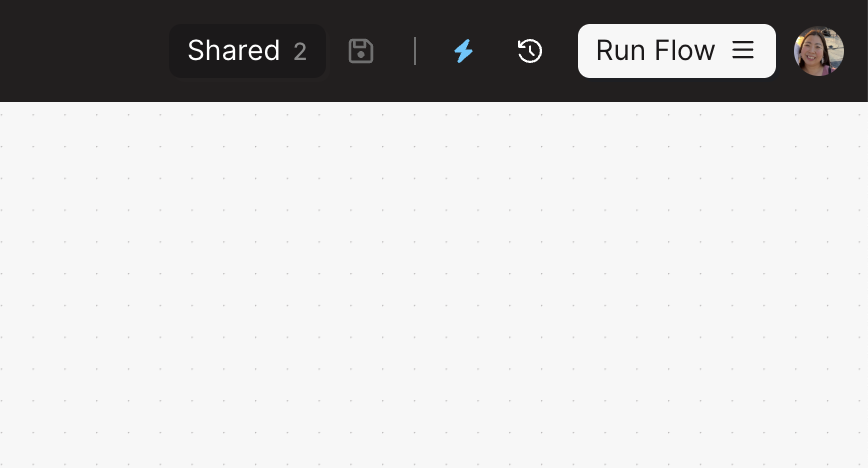
Once a Flow is run for the first time, you will have a live version of the Flow. This is the version that runs whenever you click "Run Flow," or when a Flow runs according to a scheduled trigger. To see the live version of the Flow, click on your Flow name in the top left corner and make sure Live Flow is checked.
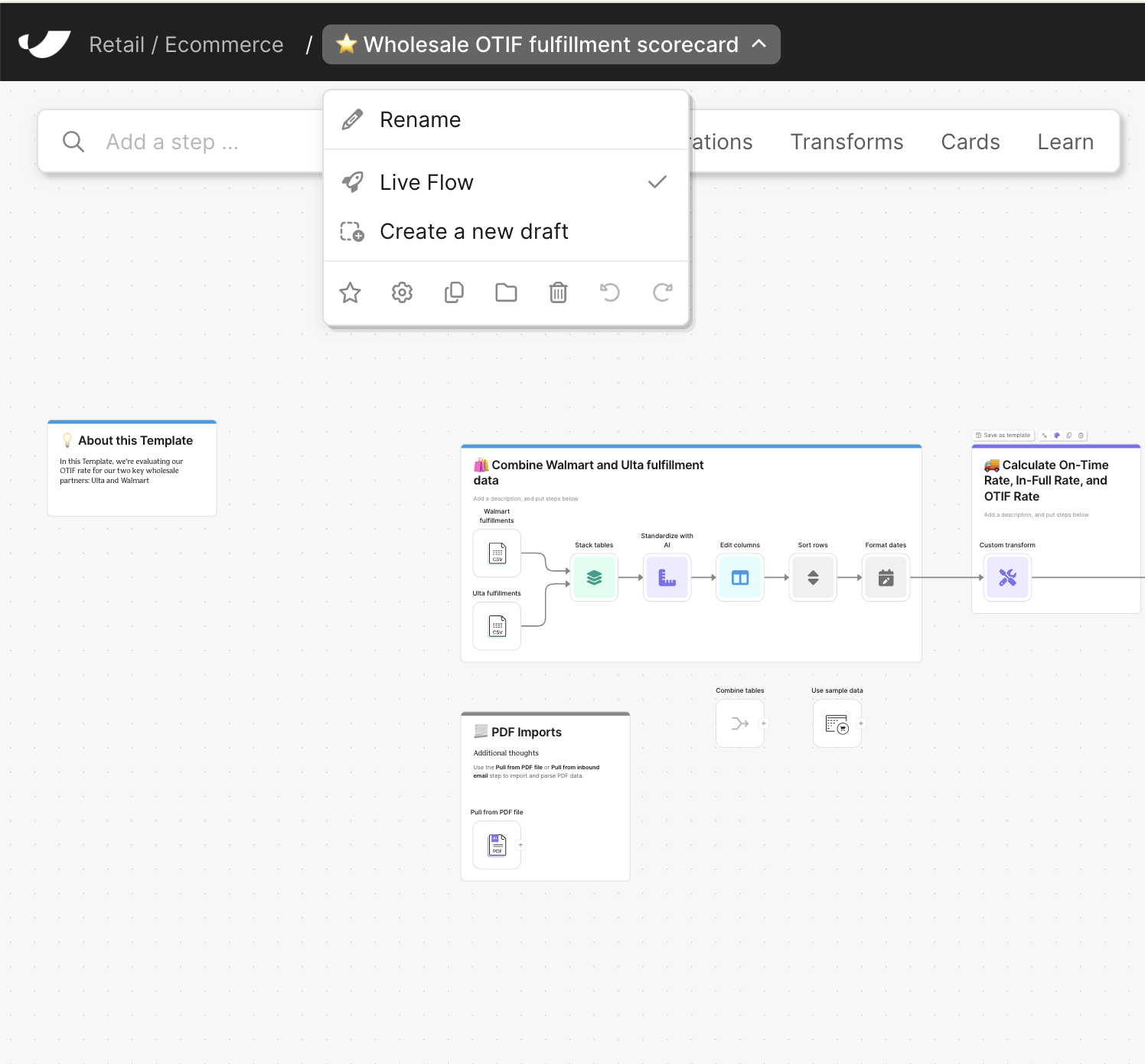
You can easily access sharing settings, schedules/triggers, run history, and some additional information about the data sent to the destinations set up in your Flow. All of these are available in the top corner of the Flow.
The Dashboard is where you view all the visualizations you created in your Flow. output generated by that Flow.
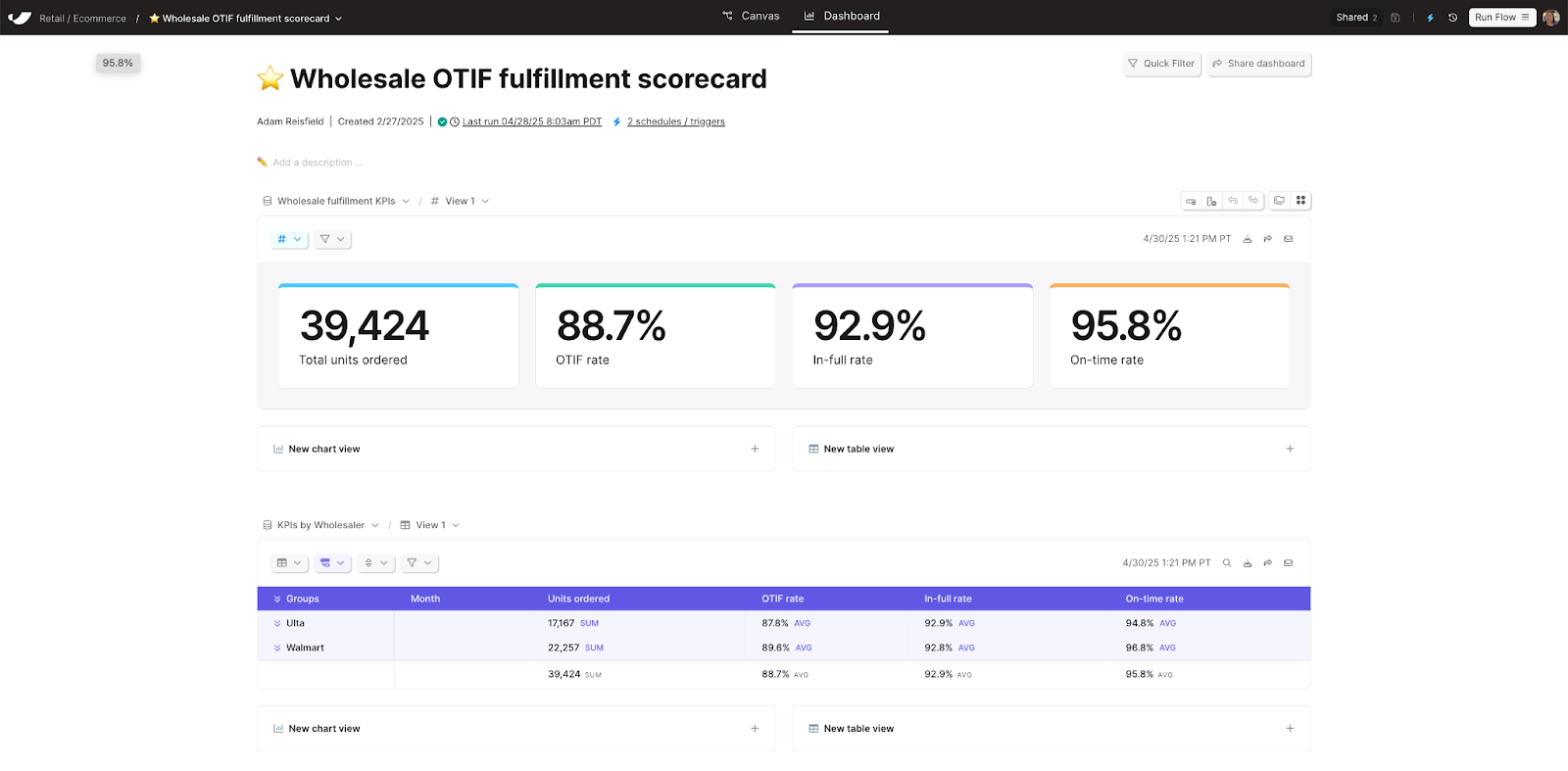
At any time you need to make an update to your Flow, you can make the edit directly in the canvas on the live version of your Flow. We love this option when we’re making quick changes like changing the name of the Parabola Table or removing one extra column. If your Flow will be undergoing a bigger change, we recommend creating a new draft and making larger changes there as to not impact the live Flow that could be triggered to run while you’re still working on the Flow.
You can only have one draft at a time, but you can always discard drafts and start with a brand new draft if you need to go back. When your draft is ready and you’d like to publish your changes, click on the “Publish Draft” icon in the top right corner. This will immediately set this version of your Flow as your Live version. You will notice that you no longer have a draft version of that Flow.
If you’d like to have more control over how draft and live Flows interact, you can access additional Flow Settings by clicking on the gear icon under the Flow Name dropdown and adjusting the “Live Flow locking” dropdown.
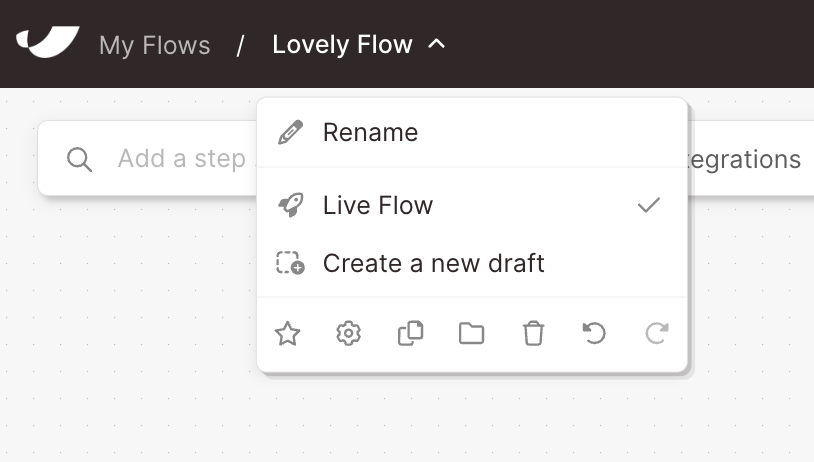
Running your Flow
There are four different ways you can run your Flow:
- Manually
- On a schedule
- Triggered with a webhook
- Triggered with an email attachment
This Parabola University video shows some of the options for configuring triggered flows, and you can see below for more instructions.
Manually
You can manually run a Flow by either clicking "Run Flow" in the top right of your canvas (when running the Flow for the first time), or clicking the "Run Flow" button in the Flow dashboard.
On a schedule
You can schedule a Flow to run automatically by going to the published Flow page and adding a scheduling rule. You can set your Flow to run on a certain day of the month, once per day, every hour, every 30 minutes, or every 10 minutes (depending on your Parabola plan). You can also specify which days of the week your Flow should run and specify run times and the time zone we should use.

The scheduling rules you set can be viewed by clicking "Add schedules/ triggers" beneath the Flow’s name on the published Flow page or by clicking the lightning bolt in the upper right corner to open the Schedules / Triggers panel. If you ever need to edit an existing schedule, click on the pencil icon next to the schedule in the panel. You can edit the scheduling rule, or delete it altogether by clicking "Remove this trigger."

You can also pause and resume your schedule at any time by clicking on the "Pause existing Flow schedules" and "Resume Flow schedules" buttons in the Schedules / Triggers panel.
Triggered with a webhook
Users on Team and Advanced plans can trigger a Flow with a webhook. To configure this, go to your Flow dashboard. Under the "Schedules / Triggers" panel, select "Add a webhook trigger." A pop-up window appears with a webhook URL you can copy and paste, as seen under the button "Regenerate Webhook Url".
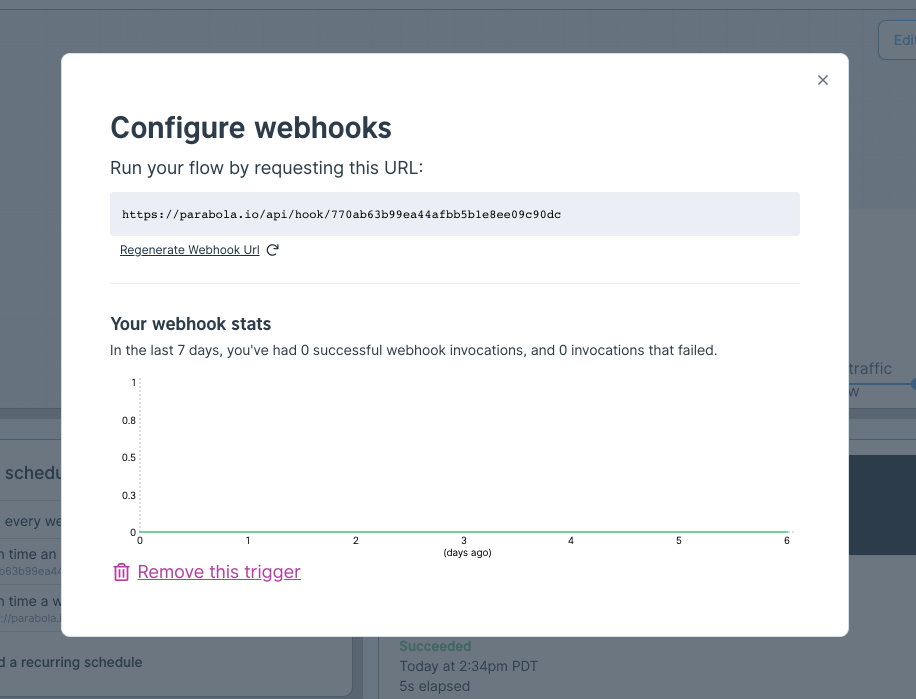
Once you highlight and copy the webhook URL, a graph will appear below. You can refer to this graph to see successful and failed webhook invocations in the last 7 days. To learn more about using webhooks on Parabola, head here.
Triggered with an email attachment
You can trigger a Flow to run from an email attachment by clicking "Add an inbound email trigger" link in the "Schedules / Triggers" panel.
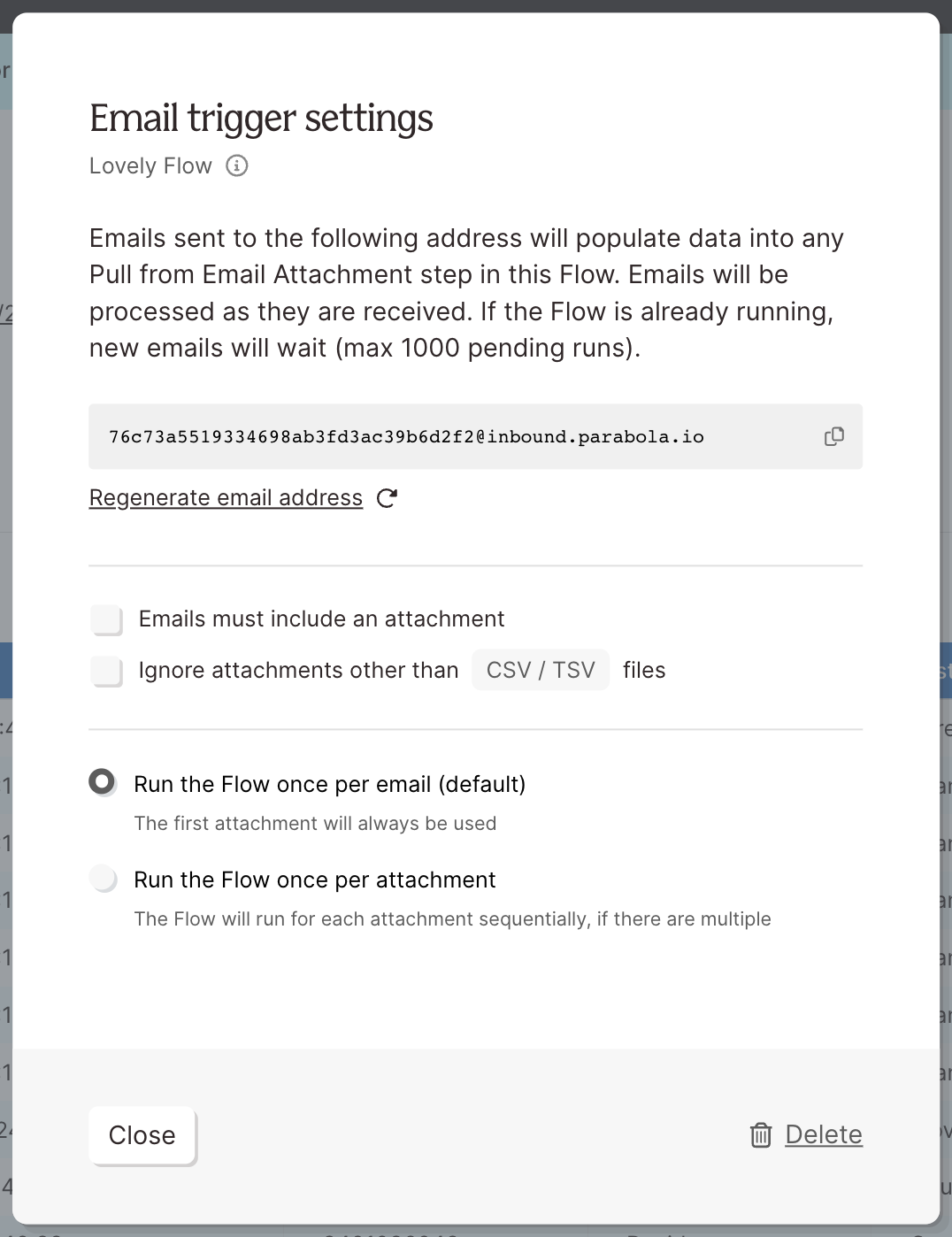
A window will pop up with instructions to follow. This is where you can find and regenerate the email address you should use to send email attachments to. Once we receive your CSV or XLS file to that designated email address, we will run your Flow automatically.
Managing triggered Flow runs
Flows with email or webhook triggers can accumulate a “queue” of pending runs (with a maximum of 1,000). The Run History panel shows how many runs are pending, and you can manage the queue by:
- Pausing the addition of new runs to the queue
- Pausing the execution of runs already in the queue
- Clearing all pending runs in the queue

Post Flow run information
Flow history
You can view your Flow’s run history by either clicking the "Last run" information listed under the Flow’s name on the published Flow page or by clicking the Flow history icon in the upper right corner of the page. This will open the "Run History" panel which will show you successful and failed Flow runs, as well as the information around those runs.
Parabola tables
Any Parabola tables that were created with the Flow will appear on the published Flow page. You can read more about Parabola tables here.